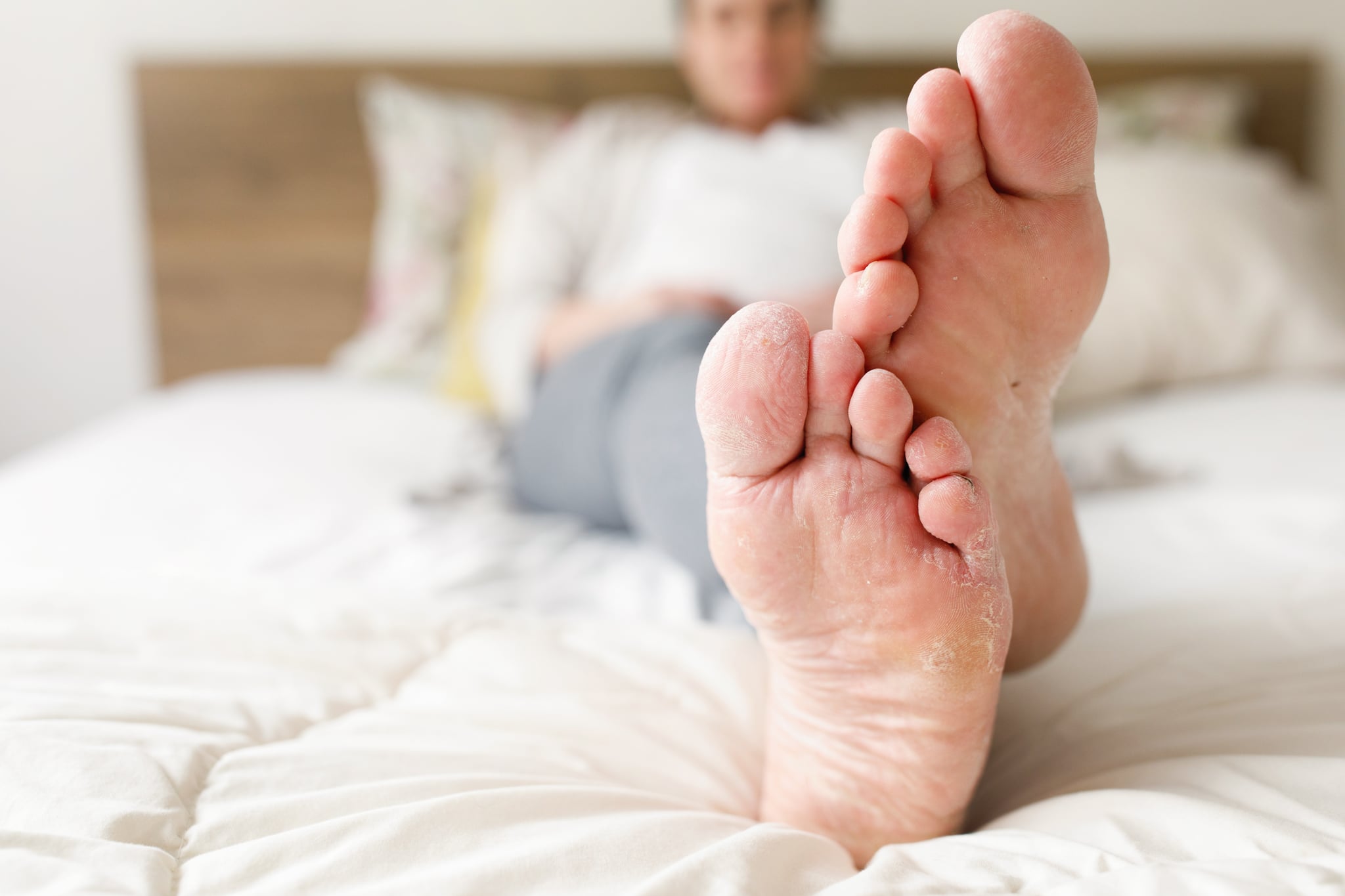
Smooth, soft feet are usually the goal during sandal season. So, it’s only natural to wonder, “Why is my foot peeling?” when you’re suddenly shedding skin down there like a snake.
With all that your feet are exposed to during the summer months — UV rays, heat, and sand — it’s understandable to have some peeling here and there, says Ife J. Rodney, MD, founding director of Eternal Dermatology Aesthetics. But while a random bit of dry skin happens, regularly peeling feet can be a sign of an underlying condition. If you’re experiencing bottom-of-feet peeling on another level, it’s worth at least considering if something else could be going on.
“Usually feet do not just peel on their own,” says dermatologist Cindy Wassef, MD, an assistant professor at the Rutgers Robert Wood Johnson Medical School. “It is usually due to some underlying medical condition.” And ultimately, consistent or persistent peeling is not normal, Dr. Rodney adds.
So what’s behind your peeling feet and, more importantly, how can you get rid of that admittedly uncomfortable symptom ASAP? Dermatologists and a podiatrist break it down, along with how to fix peeling skin on feet.
Why Are My Feet Peeling?
There’s a decently long list of potential reasons that can be behind your peeling feet. Ahead, the top culprits for why your feet are peeling:
You have a fungal infection.
A fungal infection like athlete’s foot is one of the most common causes of peeling feet, says Richard H. Graves, DPM, a board-certified podiatrist and founder of Sol Foot & Ankle Centers in Long Beach, California. “This is often mistaken for dry skin,” he says.
Athlete’s foot usually affects the space between the toes and can cause symptoms like itching, burning, and cracked, scaly skin between the toes, according to Medline Plus. You can pick up athlete’s foot from damp surfaces like showers, pools, and locker room floors, making it important to take preventative steps like keeping your feet clean, dry, and cool as much as possible, wearing clean socks, avoiding walking barefoot in public areas, and wearing flip-flops in locker room showers, Medline Plus says.
Your skin is dry.
Just like skin on other areas of your body, the skin on your feet can get dried out, too, says Gary Goldenberg, MD, a board-certified dermatologist practicing in New York City. That’s particularly true in the summer when you may be walking in sand, over steamy surfaces barefoot, and just generally being in dry air. “Dry skin itself can cause the skin to crack, flake, or peel,” Dr. Graves says.
This is more common than most people realize, Dr. Rodney says. “Foot care is often an afterthought and the lack of hydration can lead to flaky skin and peeling,” she says.
You got a sunburn.
Unfortunately, your feet can get burned by the sun’s harmful UV rays, too. “Sunburn can impact the feet, which causes the top layer of skin to peel during the healing process,” Dr. Rodney says. Definitely apply sunscreen to the tops of your feet before you go out and consider slathering it on the bottoms if they’ll be exposed to the sun.
You have eczema.
Eczema is a common skin condition that can cause dry, itchy, painful skin, according to the American Academy of Dermatologists (AAD). It’s unlikely that you’d just have eczema on the bottom of your feet (meaning, you may notice dry and inflamed skin on other areas of your body). But eczema can “lead to peeling of the feet in some cases,” Dr. Rodney says.
It’s psoriasis.
Psoriasis is a chronic disease that causes the immune system to become overactive, prompting skin cells to multiply too quickly, the National Institutes of Health (NIH) explains. Those skin patches usually form on the scalp, elbows, or knees, but they can show up on other parts of the body as well, Dr. Rodney says. And, unfortunately, those patches can lead to peeling skin.
You have contact dermatitis.
Contact dermatitis is a condition that can happen if your skin touches an irritant, Dr. Rodney says. Maybe you washed your socks in a different detergent or accidentally stepped on a plant that bothered your feet. Either way, it can lead to your feet becoming irritating and peeling.
How to Fix Peeling Skin on Feet
For the record: Doctors say you should never peel the skin that’s flaking off. “It’s never OK to peel the skin,” Dr. Goldenberg says. “Skin itself is a biologic separation between the inside and outside worlds. Peeling the skin off, even if it’s peeling on its own, can expose the skin to the elements and cause an infection.”
Still, you’ll want to take action if your feet are peeling. Doctors say the best solution for your peeling skin ultimately depends on what’s causing the peeling in the first place. “In the case of dry skin, a simple moisturizer may be effective,” Dr. Goldenberg says. So, make a point to add lotion to your feet when you get out of the shower and/or before bed to see if it makes a difference.
If you have symptoms of athlete’s foot and suspect that’s what’s behind your itch, Dr. Goldenberg recommends trying an over-the-counter anti-fungal cream. But if you think you could be dealing with a skin condition like eczema or psoriasis, or you’ve tried other home hacks and aren’t getting anywhere, it’s time to call your doctor. You may need a proper diagnosis — and could need a prescription to help clear things up.
“A visit to the podiatrist is also recommended if the skin condition is associated with pain, severe itching, bleeding, drainage, or any type of open sore,” Dr. Graves says. Your doctor should be able to help you get things under control. “Peeling feet is treatable if identified early and coupled with the right lifestyle changes,” adds Dr. Rodney.
